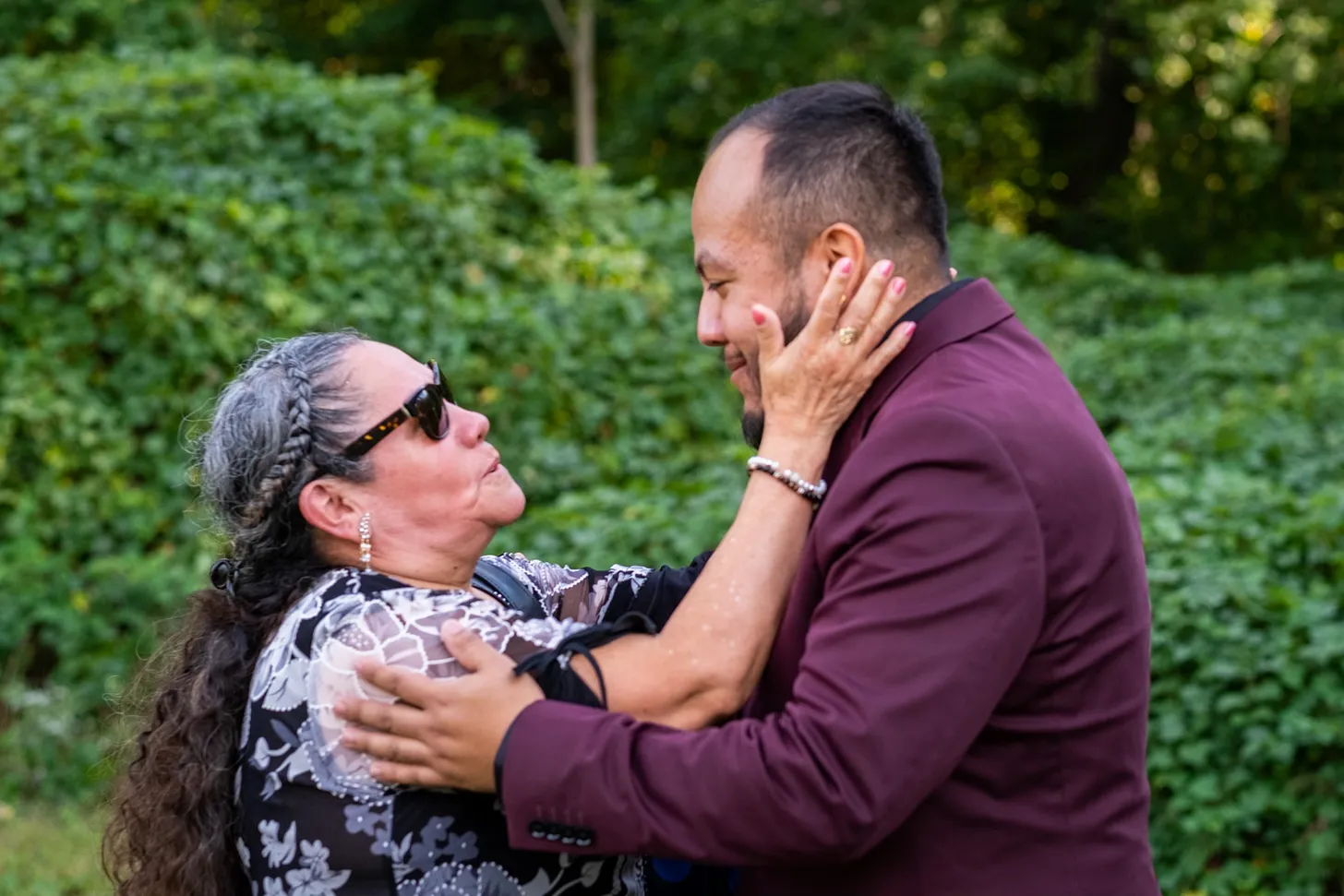Video by Serena Hodges.
Written by Mecca Bos, Co-founder and Executive Director of BIPOC Foodways
See more of Mecca’s writing here
I’ve written about my friend Jeremy Moran before.
He leads with a magnificent smile, a beaming floodlight, which contradicts his smallish stature. His glow makes him the biggest dude in the room.
When I had COVID– the first one, the bad one, the one where you weren’t sure if you were going to make it through, the one where you lost your smell and taste for a month, Jeremy delivered me a carton of Pozole the size of my head. I ate every drop, and it could just as easily have been a container of Spaghetti-O’s (such was the compromise of my senses). But I could taste the medicine of it taking hold. Soon, I began feeling better.
The healing property of food made with love is a value deeply held by both Jeremy and myself. While that pozole may have sealed our bond, it was tamales that forged it, and it will continue to be tamales, forever.
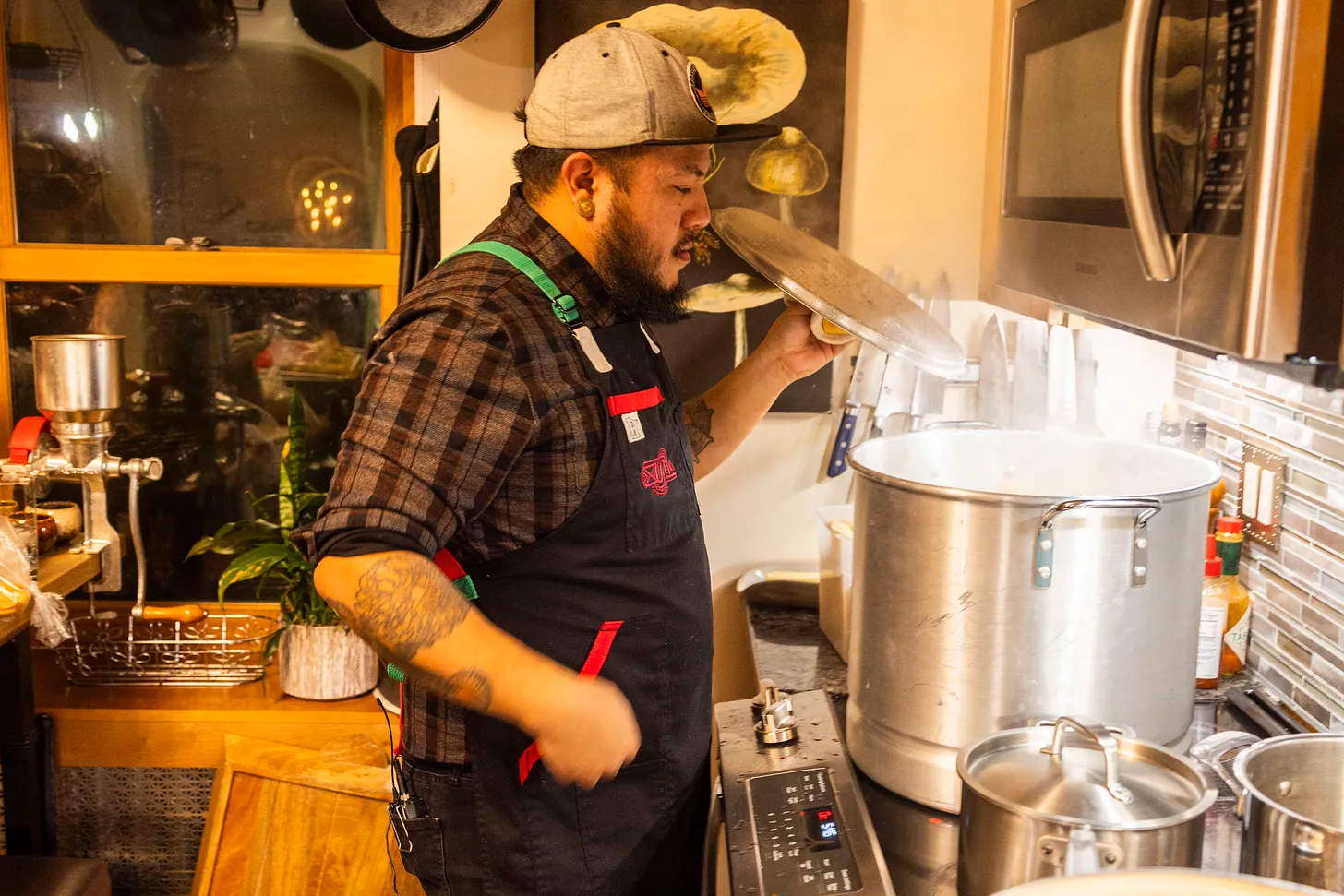
Born to Elsa Moran in The Bronx, New York, Jeremy remembers a latchkey kid’s existence.
“My mom was always either coming or going to work,” he remembers. He wasn’t a big fan of school. He was a big fan of the Power Rangers. His two older brothers or his best friend Kenny’s mom, Dona Louisa, took on a lot of the childcare duties that Jeremy, the youngest, required.
Elsa worked in a bakery.
“Every day, she brought me a chocolate donut,” he says. “And she gave me a milk with it, and let me watch Cartoon Network.” Their relationship was always shaped with food.
It was obvious to Jeremy, even when he was little, that Elsa’s life was a struggle. She had followed Jeremy’s dad to the states from her hometown of Mexico City, a difficult journey and transition. But Jeremy remembers Elsa as a mom who provided him with everything she could, while always trying to put a happy face on things for him.

“I remember one time when she was sitting on the edge of the bed crying, and when I went to ask her what was wrong, she just said, ‘Todo bien, hijo. Everything is fine. Everything is fine.’”
“She gave me the confidence to be the man I am,” he says, tearing up.
That man: proudly in love with his wife Laura, about to welcome his first son in less than a month, never enters a room without bearing gifts. The greatest of which– his mother’s tamales recipe.
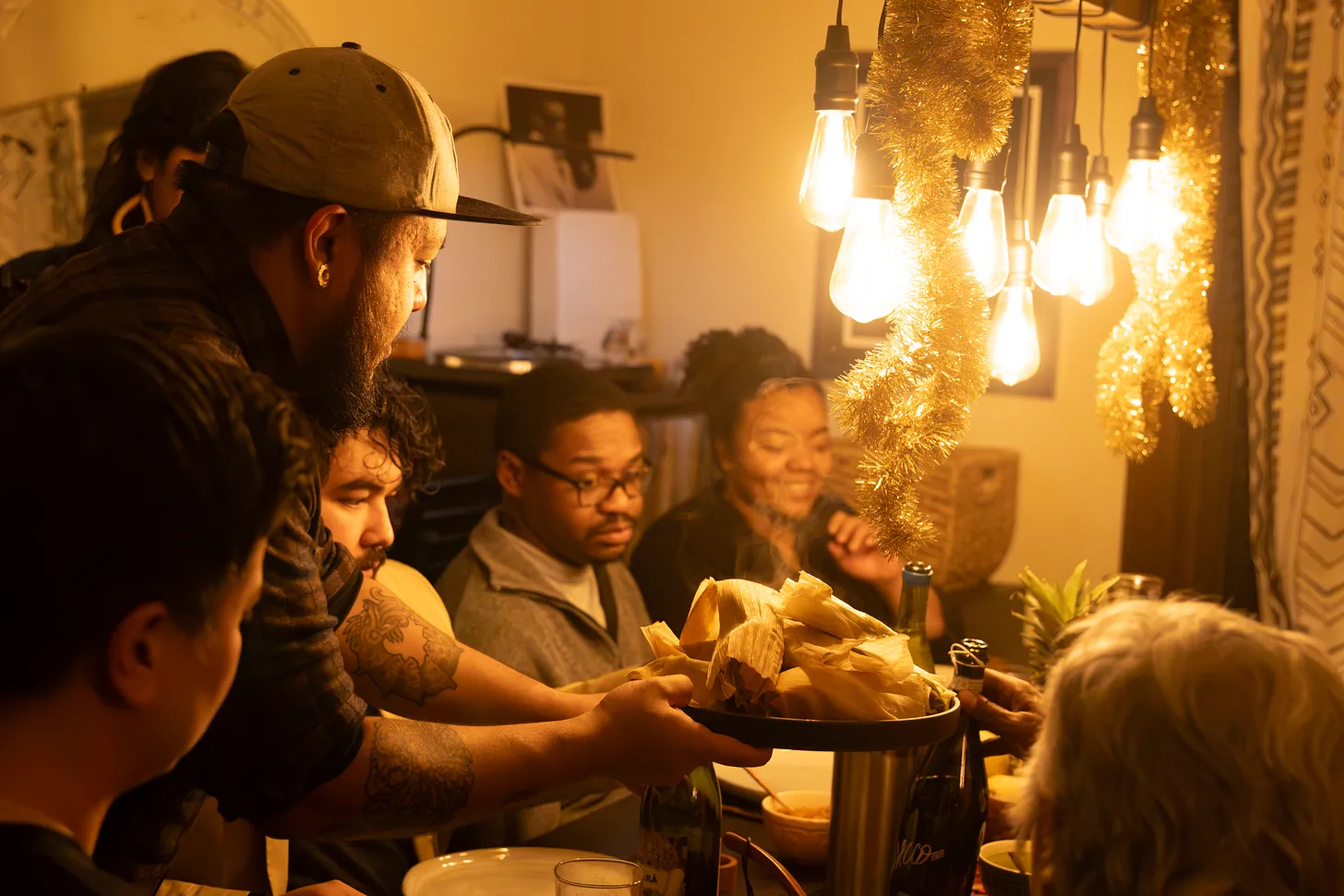
“My mom did it this way, so this is how I do it. Her mom did it this way, and this is how she taught me.”
Jeremy’s hands are always in the masa. He’s feeling for the right texture, the one his mom taught him and her mom taught her. You wouldn’t know this texture unless you had spent time in the kitchen with either woman. Or now, Jeremy.
There’s a silkiness to the Moran masa– slip off the cornhusk, and taste corn pudding. My masa never stands up to the levity of his, and I’m not even mad about that, as long as I get my share of tamales.
Those shares: we make them by the many dozen, the same way that any good batch of tamales is made. One of the first times we did, we forgot to go home. The party went on for 12 hours or more.
“That’s it! That’s it! That’s the way it goes!” Elsa laughs.
Jeremy remembers back home in the Bronx, and the lady who sold tamales in the street, Dona Rosa.
“Her family members and my mom would be on the corner just talking and chit-chatting. And all I would hear is ‘Hahahahaha!’ And I would go, ‘There’s my mom.’ And then you would hear ‘Jajajajaja!’ And that’s Dona Rosa. And another laugh, and that’s that other lady. You knew them by their laughs, and it was two blocks away!”
And that’s the thing about tamales, Jeremy and Elsa say. No other food in Mexican culture is so associated with good times and laughter.
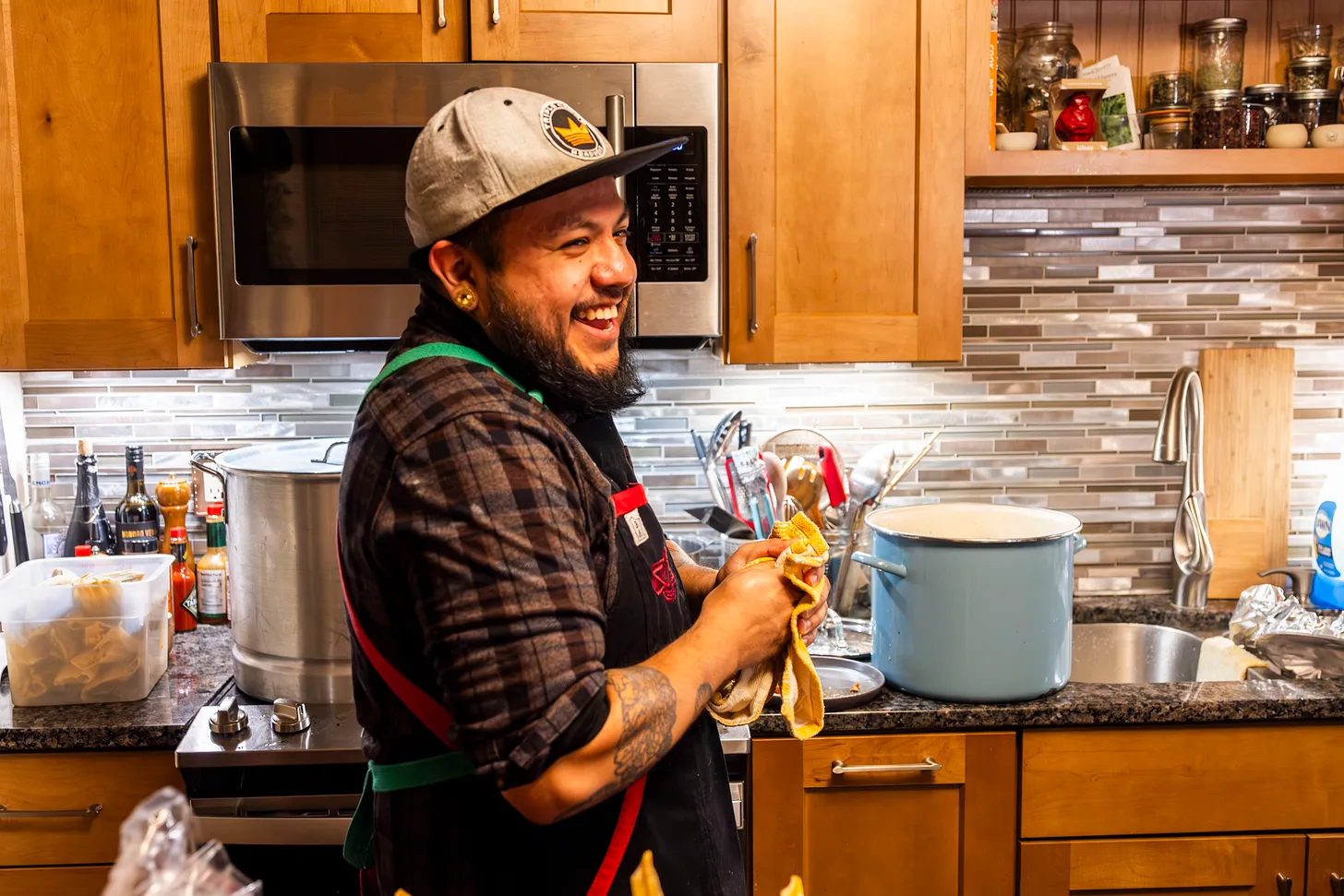
While it’s most associated with Mexican cuisine, many cultures have a dish of a dough wrapped and cooked in some kind of a natural parcel– typically a husk or a leaf. Not only does this wrapper make for a cooking vehicle as well as its own organic plate, but it also makes the tamal ready for transport, and this is important– ready for sharing.
Anyone who has stuffed a bag of frozen tamales in the overhead compartment of an airplane– and there are lots of us– knows the precious cargo a package of tamales really is.
Wikipedia says that tamales originated in Mesoamerica as early as 8000 to 5000 BC, and I believe them. Tamales seem almost prehistoric, like they’ve always been here since forever. They were considered sacred food of the gods by the Aztec, Maya, and civilizations predating them. They appear in the Aztec Codex as important during weddings and other celebrations. In other words, not much has changed in the past ten thousand years.
When Elsa arrived in the US, one of the first things she wanted to do was find out how to make her mother Herminia’s tamales. Herminia was also a tamalera, a vendor of tamales.
“I had a lot of emotions because I didn’t have my mama. It was a very big change because I was alone with my kids and alone with the kitchen.”
When Jeremy moved to Minneapolis, he did the same thing. A first order of business was learning how to make those very same tamales. He started asking Elsa how to do it via Facetime. Her keen eye was able to detect whether or not he had left out a certain ingredient from thousands of miles away, without a very strong internet connection.
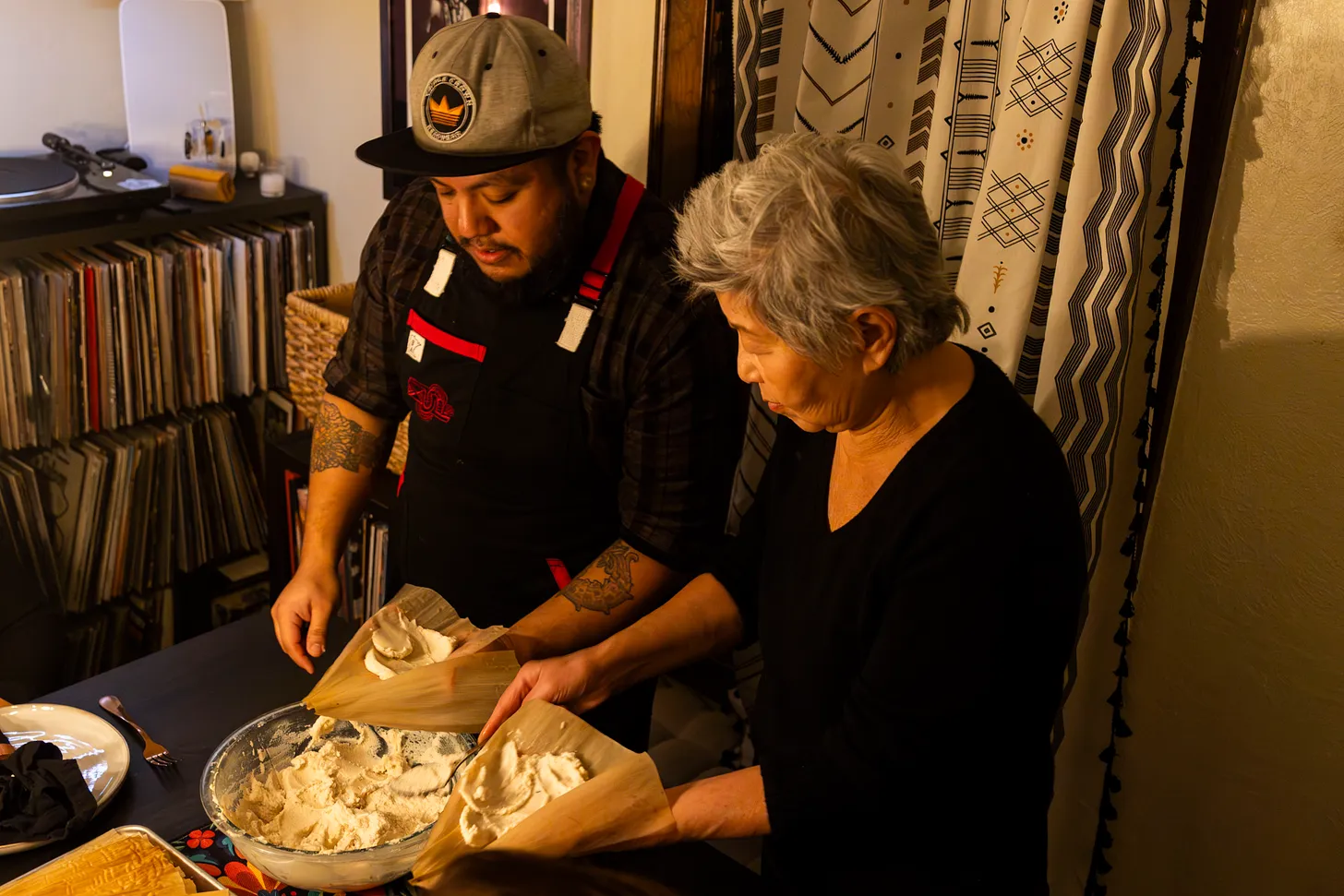
Diasporic cooking like these tamales not only keeps families together in spite of long distances, but it keeps food traditions alive throughout millenia, and can help expand family. Jeremy and I call each other “fam” as a term of endearment. After plunging our hands into the masa together, it just came naturally.
While you can find the occasional tamal in a restaurant setting, I wouldn’t recommend it. Tamales are singular. They are a project-based food item that deserves singular focus– they don’t need to be sharing a menu with chile con carne or even tacos. No– stick to your street vendor for a good tamal, or even better, find a family like the Morans.
Because that’s the thing about tamales. There is no recipe. Just the steadfast passing down of the gift of laughter, a floodlight unleashed from a corn husk.
